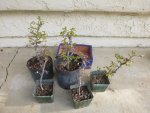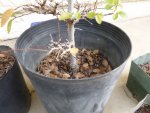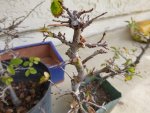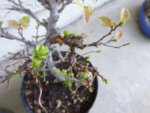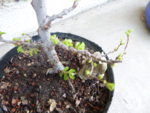JosephCooper
Shohin
Back in early January I thought of doing a Chinese Elm group planting. So I went out to a bonsai nursery and picked up 3 corkbark elms. Later I got 2 more. I planned on waiting until spring and if anyone could give me tips on group plantings that would be nice
Pictures will be uploaded soon.
Pictures will be uploaded soon.

